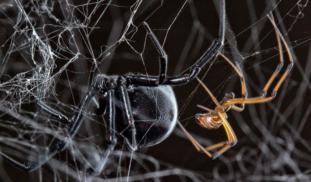Please wait...
About This Project
For a male black widow spider, life is a series of deadly challenges. He must first make a dangerous journey to find a female, then convince her to mate with him rather than cannibalize him before he can pass on his genetic material. At every stage, he will face fierce competition from rival males with the same agenda. In this project, we seek to understand how male black widows use chemicals produced by females and rivals to gain a competitive edge in the race to find and secure a mate.

Browse Other Projects on Experiment
Related Projects
How do polar bears stay healthy on the world's worst diet?
Polar bears survive almost entirely on seal fat. Yet unlike humans who eat high-fat diets, polar bears never...
Uncovering hidden insect diversity associated with a likely undescribed gall-forming midge
Does a likely undescribed species of gall-forming midge (pers. comm. Ray Gagné) on Eriodictyon plants (Yerba...
Macrofungi of the California archipelago
The eight islands of the California Archipelago are a well-studied biodiversity hotspot — but we know almost...


